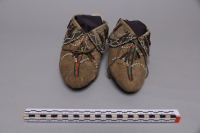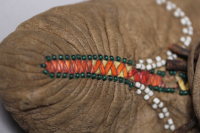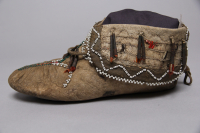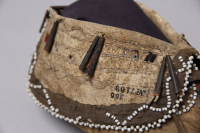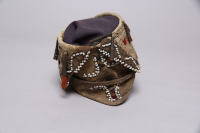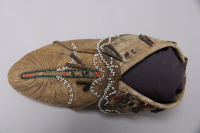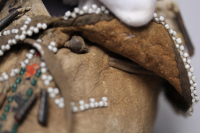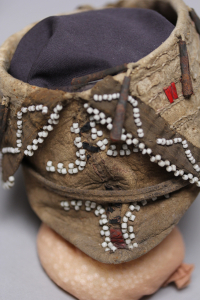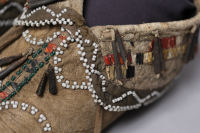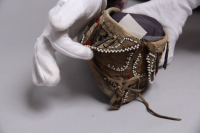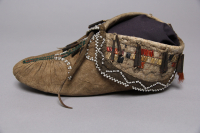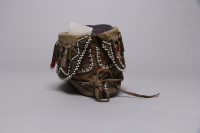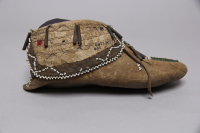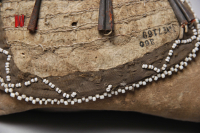moccasins
moccasins
moccasins

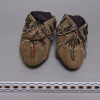
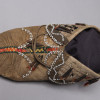
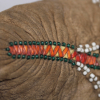
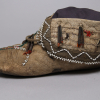
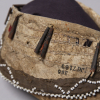
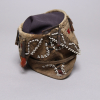
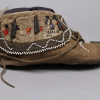

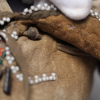
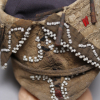
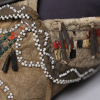
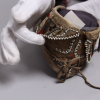
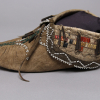
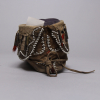

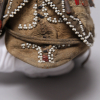
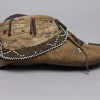
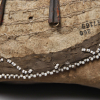
A pair of moccasins with central seam made between 1800-1850, attributed to the Hodenosaunee. Decorated with porcupine quills, glass beads, and metal cones with dyed animal hair. Transferred to Museum Volkenkunde from the Koninklijk Kabinet van Zeldzaamheden (The Royal Cabinet of Curiosities) in The Hague when it closed in 1883.
Museum documentation
GRASAC generated
Read More About This Relative
hide; porcupine quills; silk ribbon; glass beads; metal cones with dyed animal hair; hide thongs
The moccasins appear to have a single piece construction with seams up the centre of the vamp and heel, and folded-over cuffs. A single row of zig-zag band quillwork covers the centre vamp seam, is bordered by a line of green glass beads, and white glass beads in pairs of opposing semi-circular motifs. Two pairs of metal cones with animal hair on hide thongs have been tied to either side of the central quilled band. The cuffs are bound with silk ribbon edged with white beads, and appear to have been ornamented with bands of quillwork. Pairs of metal cones with animal hair on hide thongs have been tied along the top edge of the cuffs. The heels have been ornamented with a single vertical band of porcupine quills, and glass beads in opposing semi-circular motifs. Long hide thongs have been tied and laced through holes in the hide beneath the folded cuffs.
Beaded zigzag lines along the bottom edge of the cuffs. Wavy lines in stitching border the quilled panels of the cuffs. Opposing semi-circular motifs along the central and heel seems.
Opposing semi-circular motifs possibly reference to horned serpent(?). Zigzags possibly reference thunderbird(?).
Museum documentation
Provenance
Koninklijk Kabinet van Zeldzaamheden (The Royal Cabinet of Curiosities) in The Hague was established by King Willem I in 1816. When it was dissolved in 1883, the ethnographic collections were transferred to Museum Volkenkunde (The National Museum of Ethnology) in Leiden.
About This GRASAC Record













 Knowledge Sharing Platform
Knowledge Sharing Platform

